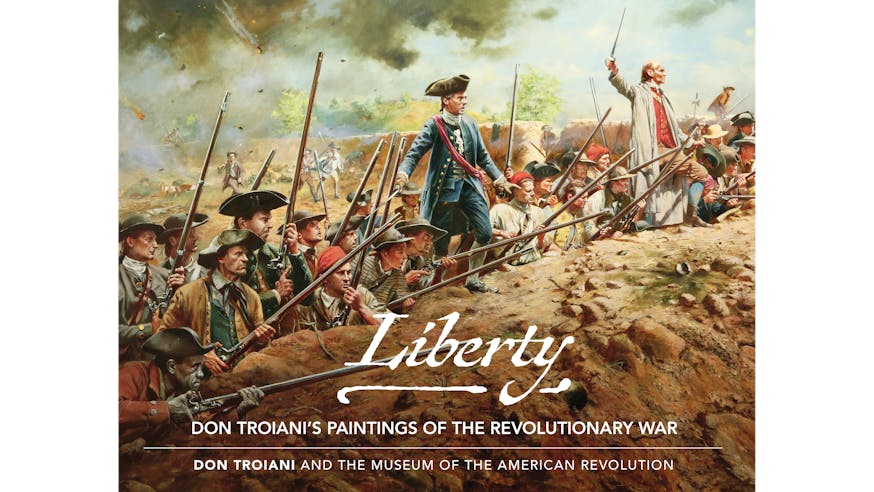Liberty Exhibit
Battle of Bunker Hill in Liberty: Don Troiani's Paintings of the Revolutionary War Exhibit
The Battle of Bunker Hill, also known as the Battle of Breed’s Hill, on June 17, 1775, in Charlestown, Massachusetts, was one of the bloodiest days of the Revolutionary War. British cannonballs (below) rained down upon the New England militiamen defending two hills overlooking Boston. Connecticut Captain Samuel McClellan fired upon British troops, likely with the firearm displayed below, as the redcoats attacked. British marines wearing belt plates decorated with anchors (below) took heavy casualties that day. Members of the British 23rd Regiment of Foot, known as the Royal Welsh Fusiliers, may have carried swords bearing their regiment’s symbol (below) as they marched forward. More than 100 New Englanders lost their lives and another 305 were wounded, while the British suffered more than 1,000 casualties. The bloodshed shocked combatants on both sides.
Take a closer look at two paintings by nationally renowned historical artist Don Troiani as well as four objects related to the Battle of Bunker that were on display in our special exhibition, Liberty: Don Troiani’s Paintings of the Revolutionary War, which was open Oct. 16, 2021 through Sept. 5, 2022.
Battle of Bunker Hill
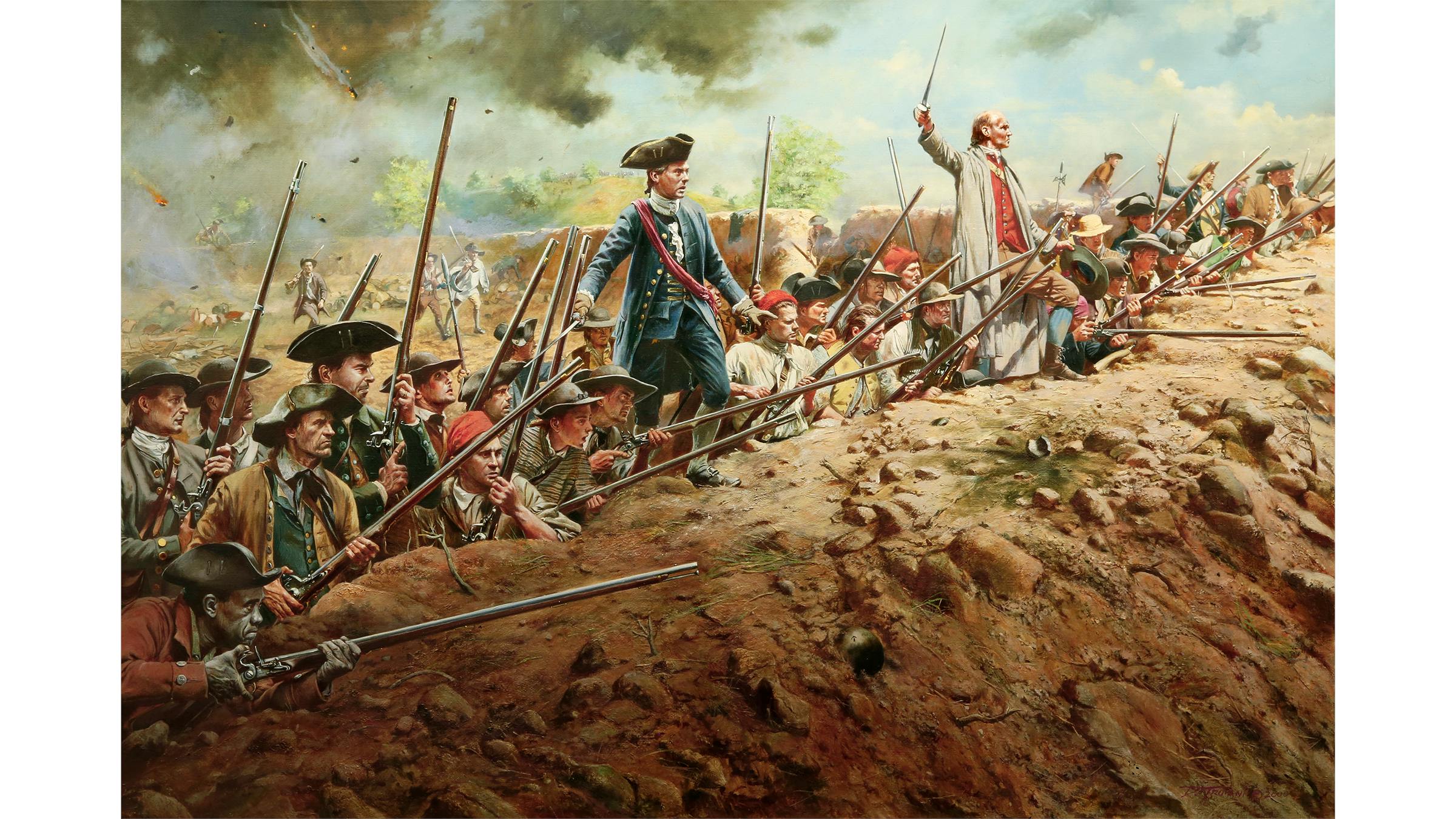
Although it was largely fought on Breed’s Hill, the battle became known as the Battle of Bunker Hill. The New Englanders who defended the earthen redoubt on Breed’s Hill overlooking Boston came from a variety of backgrounds. Many were farmers and tradesmen. Others were sailors or laborers. Men and boys of European, African, and Native American descent stood side by side, with sweat on their brows, as British cannonballs crashed into the dirt that protected them. They stared down at 2,000 redcoats advancing uphill towards the redoubt. Colonel William Prescott, wearing a red waistcoat, blue stockings, and a light-colored banyan, or robe, stood on the dirt wall and told the men to hold their fire. In the few hours that followed this scene of anticipation, the British forced the New Englanders to retreat from the redoubt, but only after the King’s troops suffered 226 killed and another 828 wounded.
The Redoubt, Battle of Bunker Hill, June 17, 1775

The attacking British Army took the redoubt on Breed’s Hill from the New Englanders defending it. This painting shows the British Marines and the 47th Regiment of Foot pouring over the dirt walls as the retreating Americans fight back, their ammunition all but depleted. One marine later described the awful carnage of the day: “I cannot pretend to describe the Horror of the Scene within the Redoubt when we enter’d it, ’twas streaming with Blood & strew’d with dead & dying Men … a sight too dreadful for me to dwell any longer on.” Among the dead was Dr. Joseph Warren, president of the Massachusetts Provincial Congress. Warren is shown here in a light-colored coat, sword drawn, defending himself in the last moments of his life.
“Broad Arrow” Cannonball
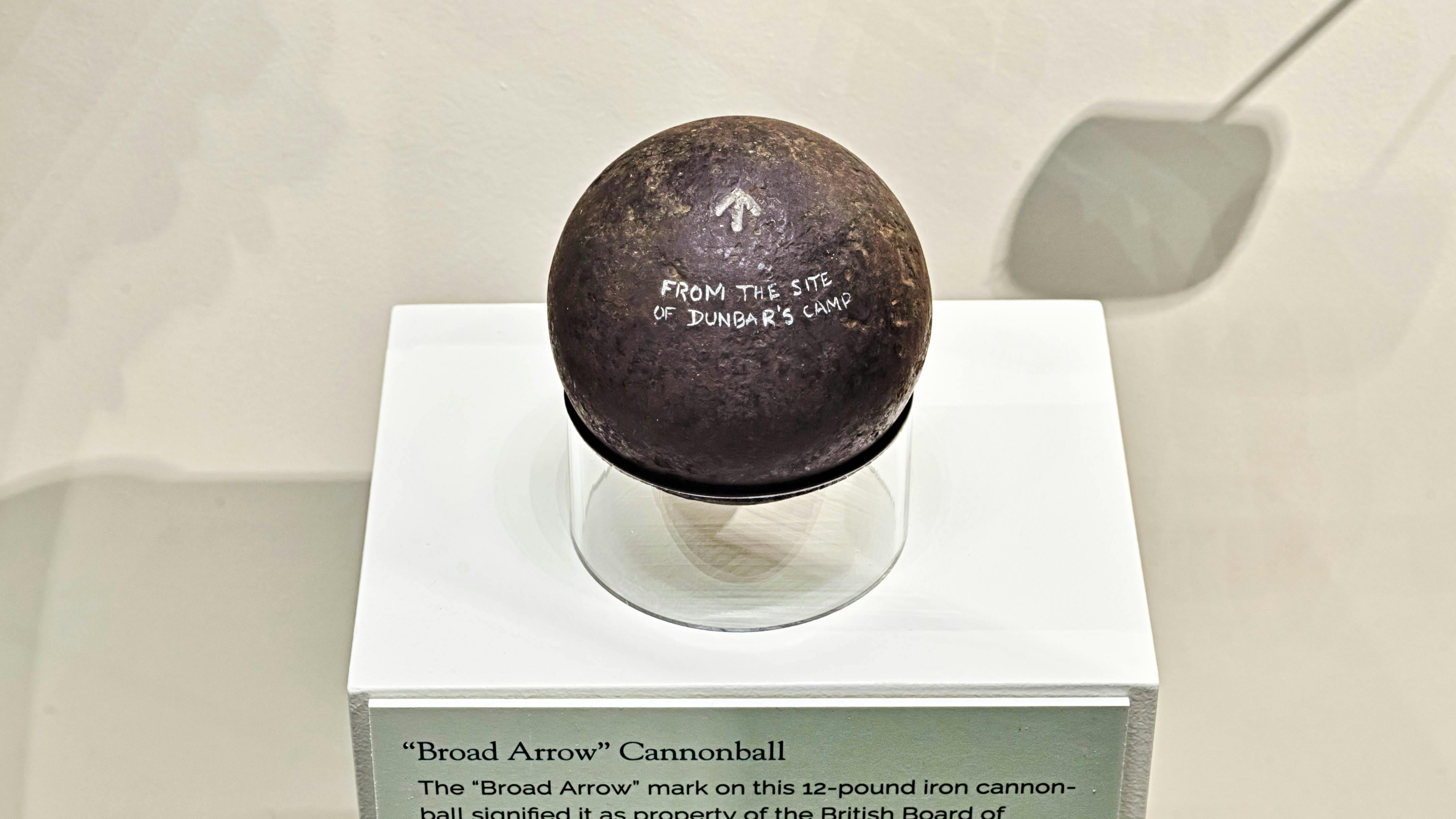
The “Broad Arrow” mark on this 12-pound iron cannonball signified it as property of the British Board of Ordnance. British guns on land and aboard ships in Boston Harbor “kept an incessant fire” of iron shot and shells on the New England troops at the Battle of Bunker Hill. British Major General John Burgoyne, who witnessed the roar of the guns that day, described it as “one of the greatest scenes of war that can be conceived.” Don Troiani used this cannonball as a model for a “Broad Arrow” cannonball embedded into the redoubt in his painting Battle of Bunker Hill (above).
British Marine Belt Plate

The enlisted men of the British Marines wore anchor-decorated brass plates, like this example, on the shoulder belts for their bayonets. Two battalions of the British Marines fought at the Battle of Bunker Hill. One officer described the battle as a “very fatal” action for the marines, due to the heavy casualties they suffered.
Royal Welsh Fusiliers Hanger

The brass hilt of this hanger is decorated with a crown over the three ostrich plumes of the Prince of Wales. Made for use by the 23rd Regiment of Foot, also known as the Royal Welsh Fusiliers, the hanger bears the German motto of the Prince of Wales: “ICH DIEN” (I serve). The 23rd Regiment’s grenadier and light infantry companies fought at the Battle of Bunker Hill.
Connecticut Officer’s Fowling Piece

Captain Samuel McClellan of Connecticut, a French and Indian War veteran, probably carried this fowling piece (a bird-hunting gun) when he fought at the Battle of Bunker Hill. Made by Massachusetts gunsmith Joel White in about 1775, the fowling piece was built to mount a bayonet. It features White’s name on the lock plate and the top of the barrel. Its serpent-shaped silver side plate bears McClellan’s initials: “SMC.” Nearly 90 years after the Battle of Bunker Hill, McClellan’s great-grandson, George B. McClellan, led the Union’s Army of the Potomac during the American Civil War.
Learn More
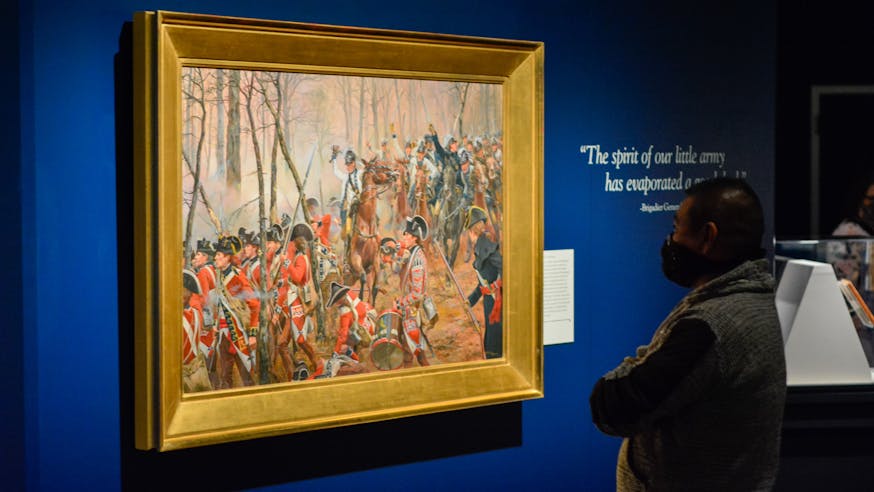
Liberty: Don Troiani’s Paintings of the Revolutionary War
October 16, 2021 - September 5, 2022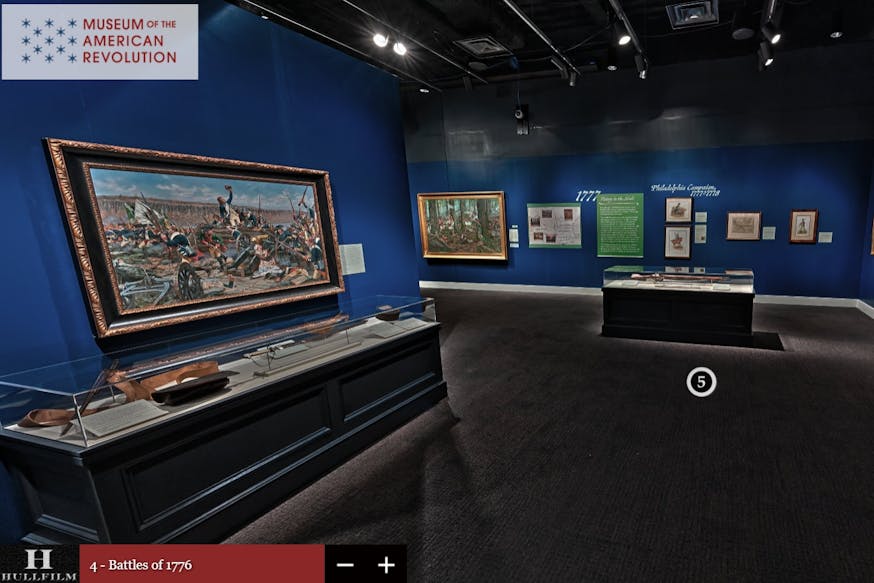
Liberty Virtual Tour
